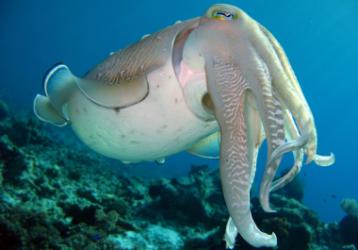
Scientists have found a way to develop a synthetic "camouflaging skin" inspired by studying and modelling the real thing in octopus and cuttlefish.
For the octopus and cuttlefish, instantaneously changing their skin colour and pattern to disappear into the environment is just part of their camouflage prowess.
These animals can also swiftly and reversibly morph their skin into a textured, 3D surface, giving the animal a ragged outline that mimics seaweed, coral, or other objects it detects and uses for camouflage.
In a study published in the journal Science, the researchers reported development of synthetic tissue groupings that allow programmable, 2D stretchable materials to both extend and retract a range of target 3D shapes.
The team’s pneumatically-activated material takes a cue from the 3D bumps, or papillae, that cephalopods such as such as octopus and cuttlefish can express in one-fifth of a second for dynamic camouflage, and then retract to swim away.
Papillae are examples of a muscular hydrostat, biological structures that consist of muscle with no skeletal support (such as the human tongue).
This is a classic example of bio-inspired engineering.
For example, the material could be controllably morphed to reflect light in its 2D spaces and absorb light in its 3D shapes.